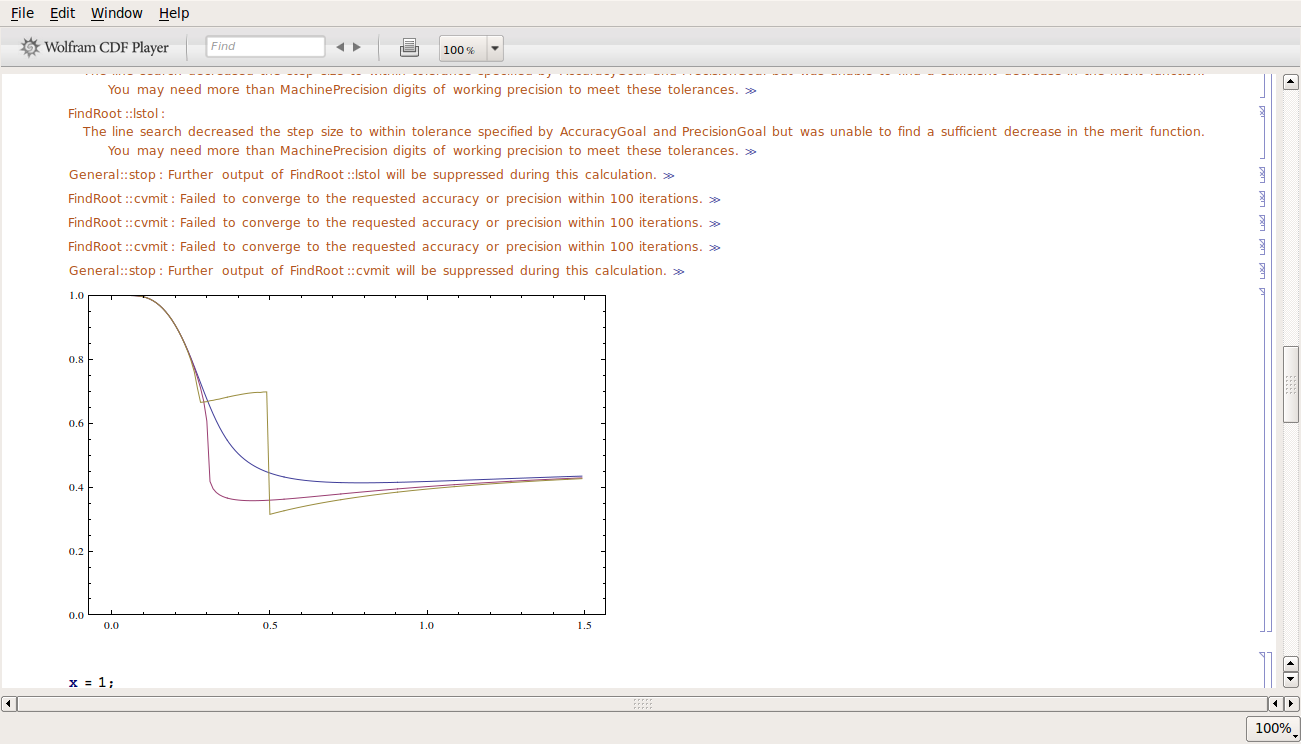Hello everybody I try to solve this system of functions and try to plot it:
x == 0.5(1.+Tanh[0.5*(x*y^2-eps1)/t]
y == Tanh[(x^2*y+eps2)/t]
with eps1 = 0. and eps2 = 1, for instance. The problem is how I can not only solve it but plot for instance x vs. t and y vs. t . Is it possible to do it in Mathematica?
Can I use first Solve[...,....,{x,y}] and explicit, for example, x as functions of t and y and then plot it?
I have the plot of the sol_x vs. t attached 
The numbers correspond to different values of eps2 that, in my example is equal to 1.
Discontinuities for particular parameters
As mention by MarcoB the code to solve this algebraic system of equation can be written as follow:
s1 = Table[{t, x} /.
FindRoot[{x == 1/2 (1 + Tanh[1/2 (x y^2 - eps)/t]),
y == Tanh[(x^2 y + h)/t]}, {x, 1.}, {y, 1.}], {t, .001, 1.5,
1/100}];
ListLinePlot[s1, PlotRange -> {Automatic, {0., 1.}},
PlotRangePadding -> Scaled[.05], Frame -> True]
Where h, eps are two constant parameters. Now when I take particular parameters for h, eps (for instance: h = 0. and eps = 0. ) I have discontinuity while for other parameters I obtain smooth function.
So this  near the discontinuity is because
near the discontinuity is because FindRoot can't be able to converge? Or because there is some problem in accuracy? I try with AccuracyGoal and number of iterations but nothing change. Is it possible, somehow to fix this problem ?
Many thanks



**? $\endgroup$TanH[],**is probably^), then look intoParametricPlot. $\endgroup$==, not=. Finally, how isCin your plot above calculated from the equations you show? $\endgroup$